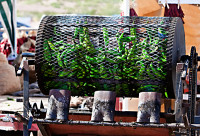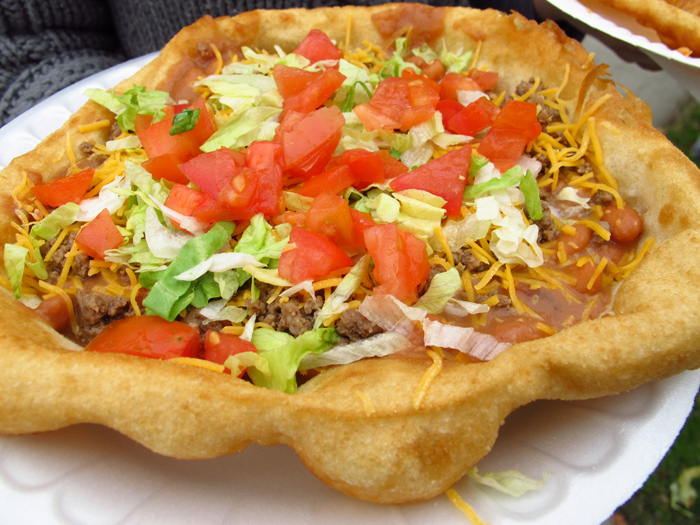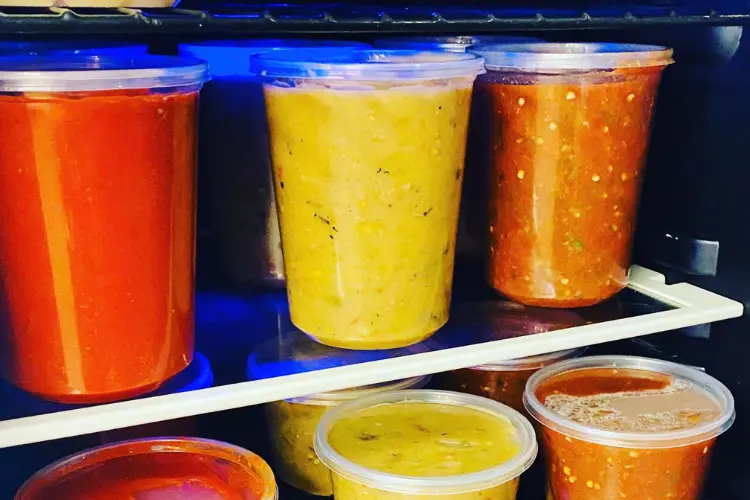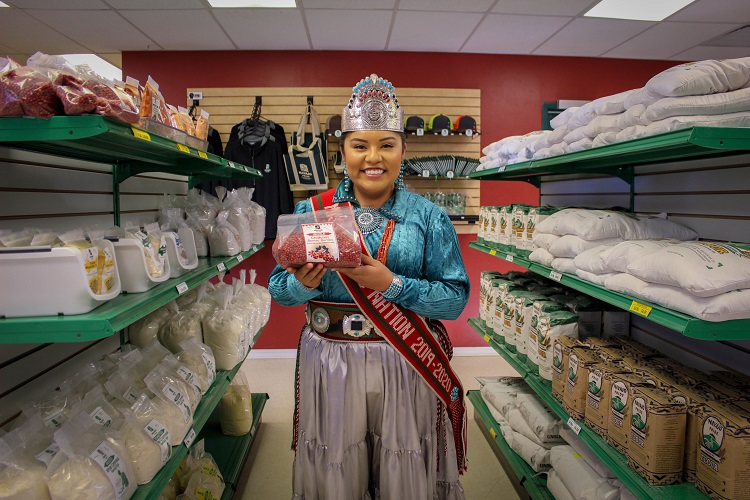

We hope eating local is as important to you as it is to us, because it supports cultures and businesses, preserves culinary heritage while celebrating new creativity, and allows one to enjoy fresher, fuller flavors.
Here’s where to eat your way through Farmington, and what that means to us.
But first: a primer on New Mexican cuisine
Of course, the United States offers a vast assortment of regional cuisines — New Mexico having its own regional cuisine isn’t unique, but the combination of influences is. There are very few parts of the country known for their truly unique style of cuisine — southern Louisiana comes to mind as one of the rare others, for example. New Mexico is one of the special places where local cuisine is as much about the ingredients as it is the culture.
Native Influences
The foundation of New Mexican cuisine comes from the culinary traditions of the region's Indigenous people. As the basis for New Mexican cooking, these influences appear on almost all local menus in Farmington.
There are some ingredients to these Native culinary traditions that are especially foundational to New Mexican cuisine:
- Corn — particularly blue corn
- Squash
- New Mexico Beans
- Piñon nuts
- And most famously, red and green chile!
Less specific versions of these foods are found throughout the country — notably, Midwestern states will argue over who has the best corn, and kitchens across the US cook with lots of squash every autumn — but the New Mexico heirloom varieties are pretty much unique to the region.
New Mexico beans, for example, are speckled purple-and-white heirlooms that were cultivated by the ancestral Puebloan people. Piñon pine is unique to the southwest, and its seed, the piñon nut, is beloved in both cooking and for snacking. Our corn, as mentioned, is often uniquely New Mexican blue corn, and the corn-and-maize-growing tradition in this part of the state has been going on for 4,000 years, meaning it’s far more vast than just the sweet corn grown in other parts of the country.
Of course, perhaps most famously known is New Mexico chile.
This includes red and green varieties — red chiles are often found dried in bunches and can be powdered, rehydrated, or added to soups and stews to impart flavor. They have heat, yes, but also a pleasant tanginess. Green chiles are great for roasting. Both varietals can be the backbone of deliciously flavorful sauces.
If you’re interested in learning about and cooking with traditional Indigenous ingredients from our Four Corners region, you may buy blue corn pancake mix, corn pollen, and juniper ash from Navajo Pride or the NAPI Region 2 store just outside of town, or at the gift shop inside the Farmington Museum & Visitor Center.
Spanish Influence
Along with Indigenous ingredients and influence, the Spanish brought additional cooking techniques, plus some herbs and spices that have since become essential to many New Mexican dishes.
Signature ingredients from this Spanish influence include:
- Cumin
- Oregano
- Garlic
- Pork
- New techniques for drying chiles and new ways to use them
Popular New Mexican dishes
All of these ingredients and techniques from the Old World and the New World have come together to create an arsenal of New Mexican dishes. Here are some favorites:
Green chile stew: a warming stew of chiles, pork, and potatoes, combining Spanish and Native ingredients and techniques.
Posole: a popular dish with red chile sauce, pork, and hominy. You’ll want a cut of pork with enough fat and connective tissue to be able to stew for a long time to break down, but not become dry. Shoulder or butt roast cut into cubes works well.
Green chile burger: less a dish in and of itself, more a concept. Roasted and chopped green chile added to a burger adds a whole other element of spice and tang. Try it with different cheeses, bacon, caramelized onions — whatever you like! And better yet, skip the hamburger bun and opt for a tortilla.
Calabacitas: a delightful take on summer squash hash, often with corn, green chiles, onions and other vegetables.
Navajo taco: Navajo fry bread topped with pinto beans, chile, cheese, lettuce, and tomato. For obvious reasons, it’s super delicious! This is very common in Farmington and the surrounding area, with many restaurants offering their variation.

Local spots around Farmington
We’ll start with places to focus on New Mexican cuisine:
Where to Get New Mexican Cuisine
First stop, The Chile Pod.
Beyond their delicious dine-in menu, The Chile Pod also sells its red and green chile by the quart. As the name suggests, they’re known for their outstanding chile-based menu, with the owner having won many local competitions.
Another option is Si Señor. Here they roast Hatch Valley chiles in-house — and also sell their red and green chile sauce by the quart! These guys have been serving made-from-scratch New Mexican dishes for over 25 years, including homemade tortillas and sopapillas.

Farmington Breakfast Spots
For a fresh new take on New Mexico cuisine, Studio Bake Shoppe is on the must-visit list. This exceptional bakery regularly offers pastries handcrafted around local ingredients like piñon and green chile.
Another great spot to start your day is Juniper Coffee Eatery. Beyond having outstanding coffee, here you’ll find a focus on the local and Indigenous-based dishes, including blue corn waffles, breakfast burritos, and Navajo blue corn bowl.

Other Great Places for Lunch or Dinner
This, of course, isn’t a comprehensive dining guide for Farmington, but it’s a good place to start! It wouldn't be complete without a few more local favorite dining hot spots.
If you want to grab a beer and a meal, Three Rivers Brewery & Eatery is a locally-owned spot in Historic Downtown Farmington. They offer a seasonal menu that features the best of local ingredients and elevated pub fare. Their house-made Atomic Sauce is a must for fiery food lovers.
There’s also Clancy’s Pub & Irish Cantina, which has been serving up a variety of foods since the 1970s. Their green chile cheeseburger is exceptional and was named the best burger in New Mexico in 2009 by Food Network Magazine.
Then there’s Fiesta Mexicana — we’ve talked a lot about New Mexican cuisine, but we’ll happily vouch that this could be the best Mexican, sans “New,” food in Farmington. Their camarones verdes and churros have fans across the Four Corners region.
At the end of the day, one of life’s greatest joys is eating good food with lovely people. We think Farmington offers so much variety, from classic New Mexican cuisine to loads of choices beyond.
When you come to visit, be prepared to come hungry, but leave full and satisfied!

